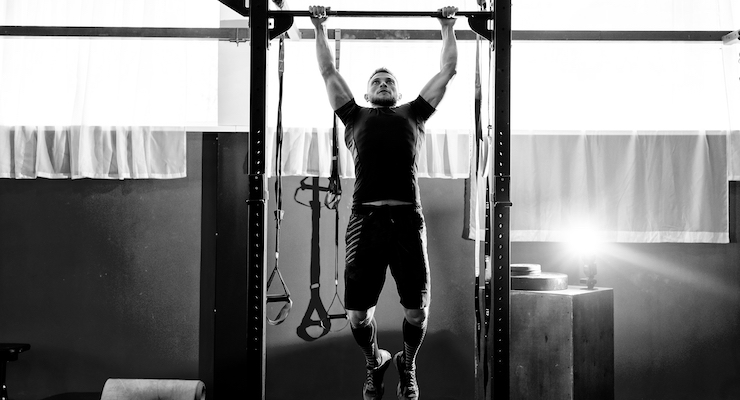Market Updates, Research
Whey Uniquely Benefits Post-Eccentric Exercise Muscle Damage
Eccentric exercises intensively focus on muscles as they lengthen, not as they contract.

By: Mike Montemarano

According to a double-blind, controlled clinical trial which cross-examined pea protein, whey protein, and water-only supplementation, whey protein appears to offer a better nutritional profile for muscle damage that occurs as a result of eccentric exercise.
Eccentric exercise is very intensive, and specifically focuses on the expansion of muscles, whereas most weight lifting places emphasis on muscle contraction. Examples of eccentric exercise typically include slowing down motions in a lift that normally don’t cause as much physical strain due to gravity, such as lowering the body slowly during a pull-up, or the downward motions of a squat or a push-up.
92 males between the ages of 18 and 55 who were non-athletic but not obese were required to perform an eccentric exercise bout daily over a five day period, supplementing either with whey protein, pea protein, or water alone. The eccentric exercise protocol induced significant muscle damage and soreness, the authors said, and reduced performances in the bench press and 30-second Wingate were observed as a result of this muscle damage.
In order to address the extent of the muscle damage, researchers evaluated the blood levels of a number of biomarkers indicative of muscle damage, and compared the effects on these biomarkers that all three groups had.
Specifically, there were larger effect sizes for creatine kinase and myoglobin in the whey protein group during the fourth and fifth days of recovery, indicating that their muscles were recovering more significantly, compared to both pea protein and water groups which saw “intermediate non-significant” effects. Despite this, no significant differences in self-reported muscle soreness were seen across any of the participating groups.
Because high levels of each kind of protein were administered to the participants, researchers posited that differences in the branched-chain amino acid profiles of pea and whey protein could have been responsible for the significant differences seen in the muscle biomarkers.
“The BCAA profile of pea protein (leucine, isoleucine and valine) is 17.9 g/100 g protein and is 24% below that of whey protein (23.7 g/100 g protein). The average study participant weighed 81 kg and consumed 73 g/day of supplemental protein. Thus, participants in the whey and pea protein groups ingested about 17.3 and 13.1 g of supplemental BCAA per day, respectively. The 4.2 g/day difference in BCAA may have been one factor influencing the efflux of muscle damage markers,” the authors wrote.
“In general, future studies should consider using leucine-fortified pea protein isolate supplements or greater dose volumes to match the leucine and BCAA profile of whey protein isolate. Post-exercise mitigation of serum muscle damage biomarkers may be similar between whey and pea protein supplement groups in comparison to water when leucine and BCAA intake levels are comparable,” the study concluded.


